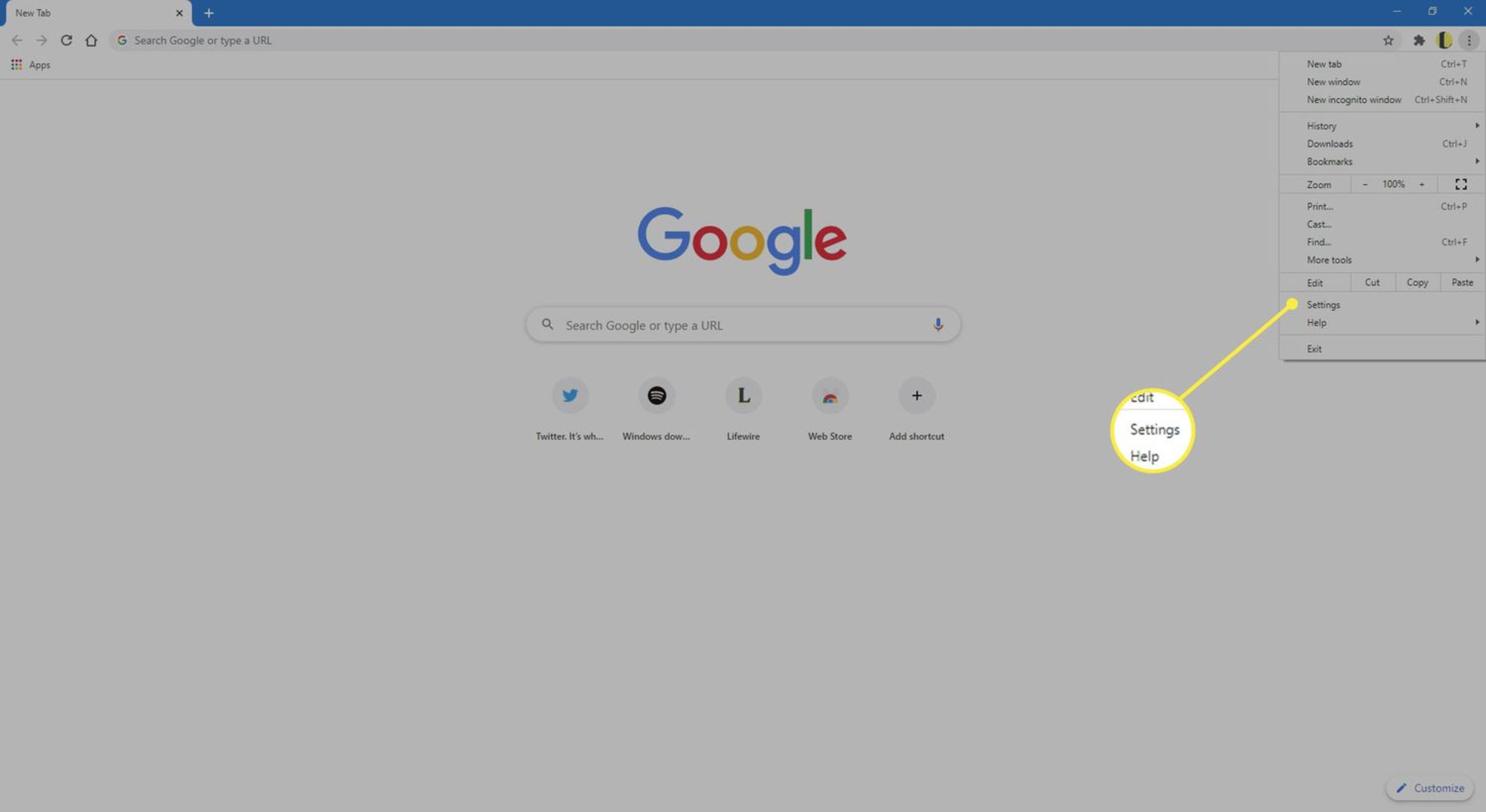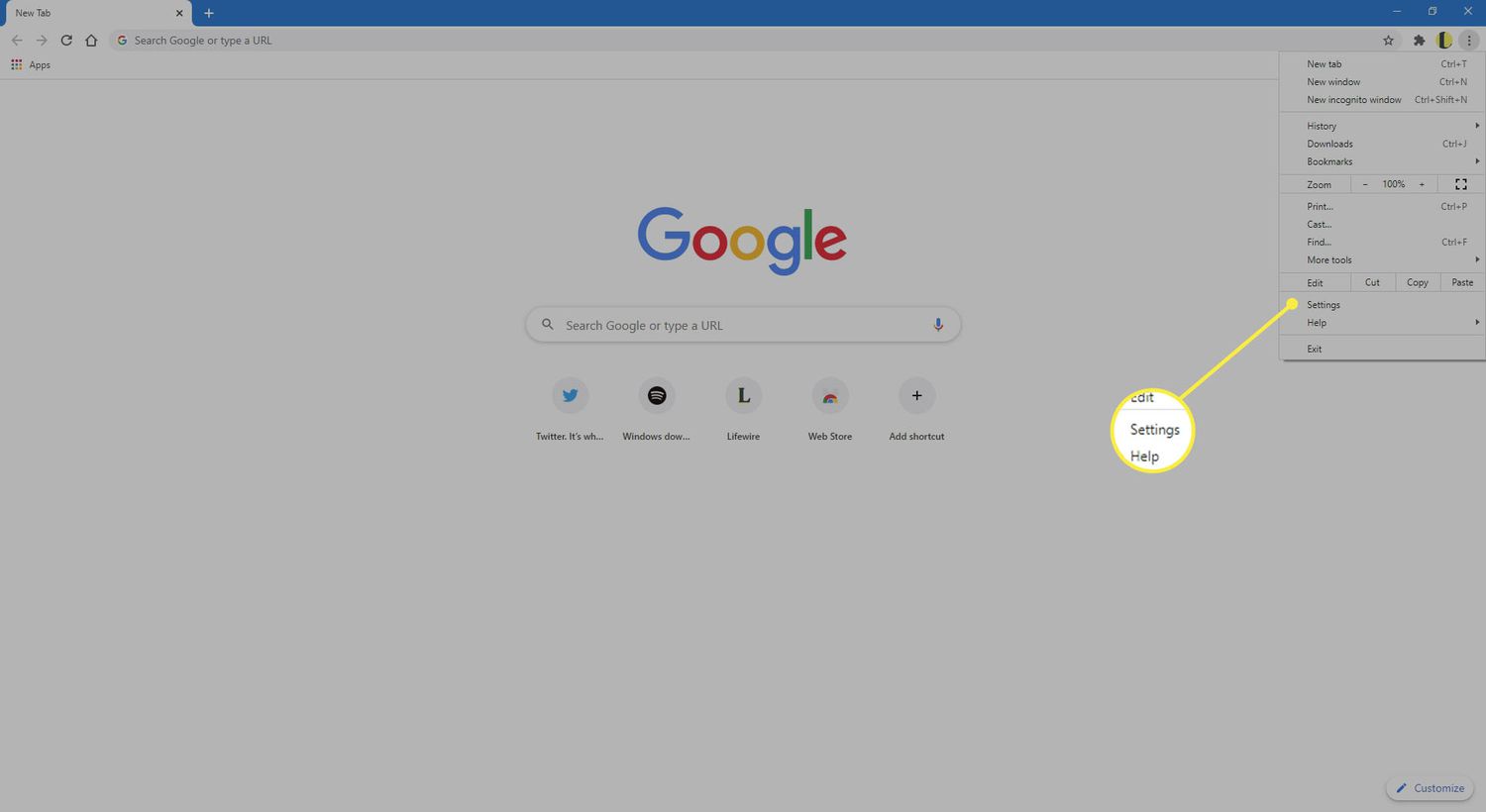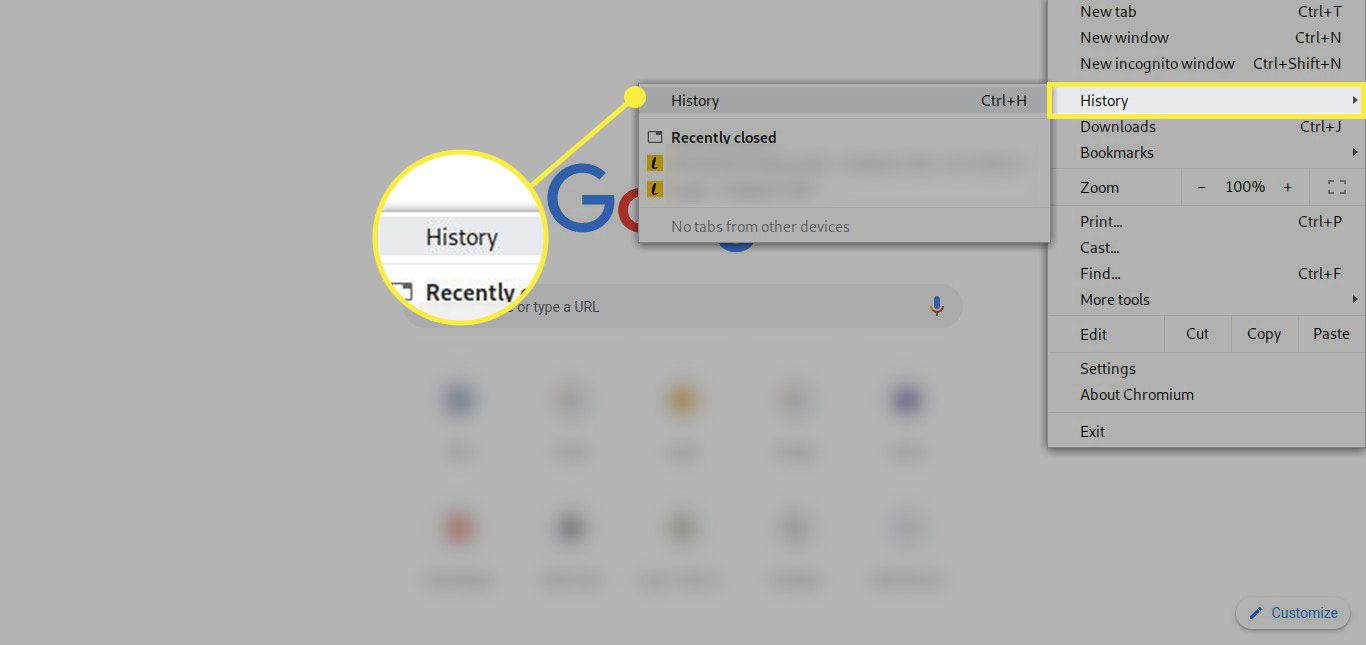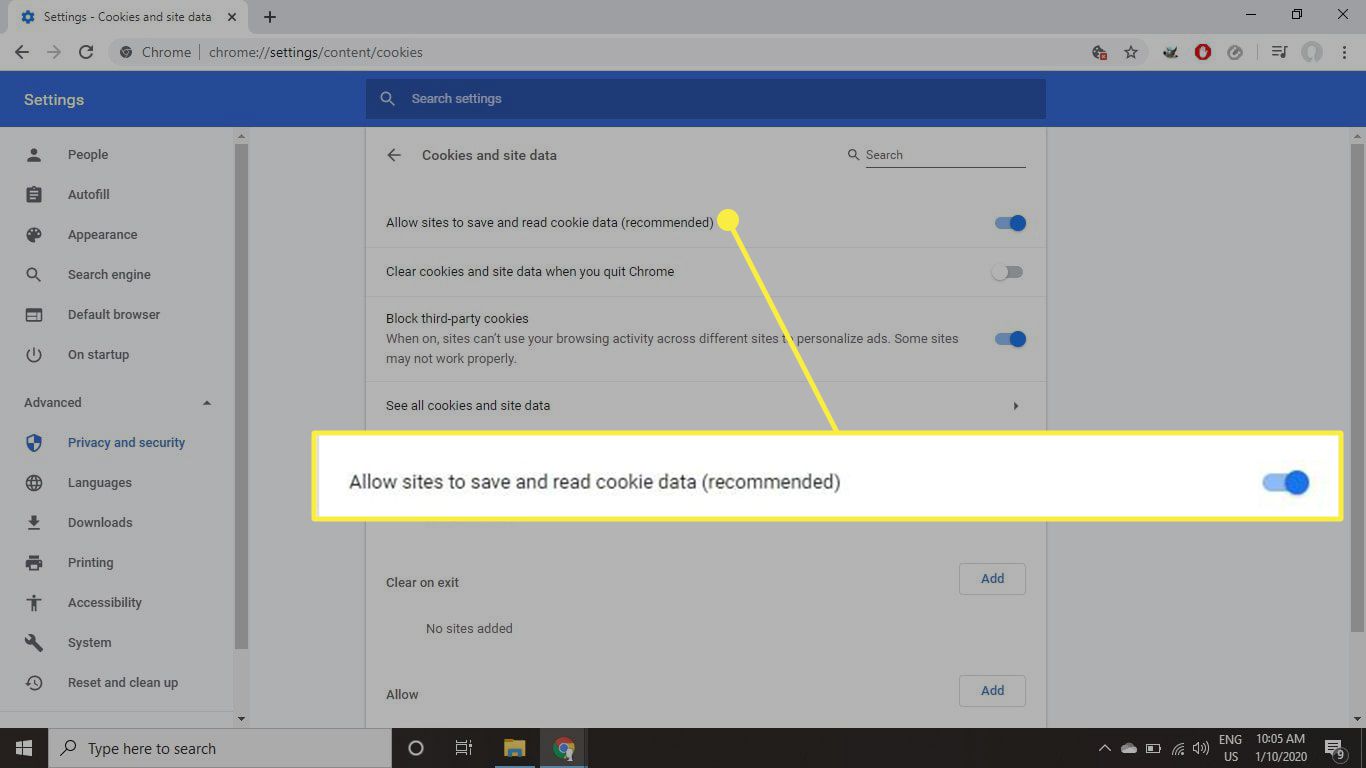Introduction
Google Chrome is one of the most popular web browsers, known for its speed, simplicity, and user-friendly interface. It offers a wide range of features and settings that can be customized to enhance the browsing experience. One such feature is the ability to enable cookies, which are small pieces of data that websites store on your computer to remember your preferences, login information, and other browsing activities.
Enabling cookies in Google Chrome is essential for accessing certain websites, as many rely on cookies to provide personalized content and functionality. By allowing cookies, you can enjoy a seamless browsing experience, such as staying logged in to your favorite websites, receiving personalized recommendations, and retaining items in your shopping cart across sessions.
In this article, we will guide you through the process of enabling cookies on Google Chrome. Whether you're a seasoned Chrome user or a newcomer to the browser, understanding how to manage cookies can help you make the most of your online activities while maintaining your privacy and security.
Let's dive into the step-by-step instructions to enable cookies in Google Chrome and explore the additional options for customizing cookie settings to suit your preferences and browsing habits.
Step 1: Open Google Chrome
To begin the process of enabling cookies in Google Chrome, you first need to open the browser on your computer or mobile device. If you're using a Windows PC, you can typically find the Google Chrome icon on your desktop, taskbar, or in the Start menu. Simply double-click on the icon to launch the browser.
For Mac users, you can locate Google Chrome in the Applications folder or on the Dock. Click on the Chrome icon to open the browser and proceed with the cookie settings.
If you're using a mobile device such as a smartphone or tablet, you can access Google Chrome by tapping on the Chrome app icon from your home screen or app drawer. Once the browser is open, you're ready to move on to the next step in the process of enabling cookies.
Upon opening Google Chrome, you'll be greeted by the familiar interface featuring the address bar, tabs, and menu options. Take a moment to ensure that you are using the latest version of Chrome to access the most up-to-date features and security enhancements.
With Google Chrome now open and ready for customization, you're prepared to proceed to the next step, where we will delve into accessing the settings to enable cookies and tailor the browsing experience to your preferences.
Step 2: Access the Settings
Accessing the settings in Google Chrome is the gateway to a plethora of customization options, including the ability to manage cookies and privacy preferences. Whether you're using Chrome on a desktop or mobile device, the process of accessing the settings remains consistent, allowing users to conveniently tailor their browsing experience.
On a desktop or laptop, the settings menu can be accessed by clicking on the three vertical dots located in the top-right corner of the browser window. This icon represents the Chrome menu and serves as the entry point to various browser settings and features. Upon clicking the icon, a dropdown menu will appear, presenting a range of options for customizing Chrome's behavior and appearance.
From the dropdown menu, navigate to the "Settings" option and click on it to enter the settings interface. This action will open a new tab within the browser, displaying a comprehensive array of settings categories on the left-hand side. These categories cover a wide spectrum of features, such as appearance, search engine preferences, privacy and security, and more.
For mobile users, accessing the settings follows a similar pattern. After opening Google Chrome on your mobile device, tap on the three vertical dots located in the top-right corner of the browser screen. This action will reveal a menu with various options, including "Settings." Tap on the "Settings" option to proceed to the next stage of customizing your browsing experience.
Upon entering the settings interface, users are presented with a user-friendly layout that facilitates seamless navigation through the available options. The settings are organized into distinct sections, allowing users to easily locate the specific features they wish to modify. This intuitive design ensures that users can efficiently manage their browsing preferences without unnecessary complexity.
With the settings interface now accessible, you're poised to delve into the next step of enabling cookies in Google Chrome. The journey continues as we progress to the pivotal stage of configuring privacy and security settings, where the management of cookies takes center stage. Let's move forward to the next step and unlock the potential for a personalized and secure browsing experience in Google Chrome.
Step 3: Click on "Privacy and security"
Upon entering the settings interface in Google Chrome, the next crucial step in enabling cookies involves navigating to the "Privacy and security" section. This pivotal category encompasses a range of essential features that empower users to manage their browsing privacy, security, and data management preferences.
Within the "Privacy and security" section, users are presented with a comprehensive array of settings that enable them to customize their browsing experience while maintaining control over their personal data and online interactions. This section serves as a central hub for configuring privacy-related options, including cookie management, site permissions, and security protocols.
To access the "Privacy and security" settings, users can easily locate and click on the corresponding category listed on the left-hand side of the settings interface. Upon clicking on "Privacy and security," a submenu will expand, revealing a diverse set of options that cater to different aspects of online privacy and security.
One of the key features within the "Privacy and security" section is the "Cookies and other site data" setting. This critical component allows users to manage how Chrome handles cookies, which are integral to the functionality of numerous websites. By clicking on "Cookies and other site data," users can delve into granular controls that govern the storage, access, and deletion of cookies on their devices.
Furthermore, within the "Privacy and security" settings, users can explore additional options such as "Site settings," which provides a comprehensive overview of individual website permissions, including those related to cookies, pop-ups, and notifications. This level of customization empowers users to fine-tune their browsing experience according to their preferences, ensuring a harmonious balance between personalized content and privacy safeguards.
In essence, the "Privacy and security" section serves as a pivotal gateway to a wealth of privacy-enhancing features, including the management of cookies and site data. By clicking on this section within the settings interface, users can embark on a journey of personalized control, enabling them to shape their browsing environment in alignment with their individual preferences and privacy considerations.
With the "Privacy and security" settings now within reach, users are primed to advance to the next step, where the pivotal action of enabling cookies unfolds. The journey continues as we progress to the crucial stage of empowering Chrome to handle cookies in accordance with your preferences, thereby fostering a seamless and tailored browsing experience.
Let's proceed to the next step and unlock the potential for a personalized and secure browsing experience in Google Chrome.
Step 4: Enable Cookies
Enabling cookies in Google Chrome is a fundamental aspect of customizing your browsing experience to align with the requirements of various websites and online services. By allowing cookies, you enable websites to remember your preferences, login information, and other browsing activities, thereby enhancing the functionality and personalization of your online interactions.
To enable cookies in Google Chrome, users can navigate to the "Cookies and other site data" settings within the "Privacy and security" section. This pivotal step empowers users to exert control over how Chrome handles cookies, ensuring a seamless and tailored browsing experience.
Upon accessing the "Cookies and other site data" settings, users will encounter the option to "Allow sites to save and read cookie data (recommended)." By toggling this setting to the "on" position, users effectively enable Chrome to store and access cookie data, thereby facilitating the smooth functioning of websites that rely on cookies to deliver personalized content and features.
Furthermore, within the "Cookies and other site data" settings, users can explore additional options such as "Block third-party cookies" and "Clear cookies and site data when you quit Chrome." These supplementary settings offer users the flexibility to fine-tune their cookie management preferences, allowing for enhanced privacy and control over their online data.
Enabling cookies in Google Chrome is a pivotal step toward fostering a seamless and personalized browsing experience. By granting websites the ability to store and access cookie data, users can enjoy the convenience of staying logged in to their favorite websites, receiving personalized recommendations, and retaining customized settings across browsing sessions.
It's important to note that while enabling cookies can enhance the functionality of many websites, users should exercise caution and regularly review their cookie settings to ensure alignment with their privacy preferences. Chrome's intuitive interface and granular cookie management options empower users to strike a balance between personalized content and privacy safeguards, thereby fostering a harmonious and secure online environment.
With cookies now enabled in Google Chrome, users are poised to embark on a browsing journey enriched by personalized content and seamless interactions with their favorite websites. The stage is set for a tailored and secure browsing experience, driven by the seamless integration of cookies within Chrome's versatile framework.
The journey continues as we progress to the next step, where users can explore the additional options for customizing cookie settings to suit their preferences and browsing habits. Let's move forward and delve into the realm of personalized cookie management within Google Chrome.
Step 5: Customize Cookie settings
Customizing cookie settings in Google Chrome empowers users to fine-tune their browsing experience according to their individual preferences and privacy considerations. By delving into the granular controls offered within the browser's settings, users can exert precise control over how cookies are managed, stored, and accessed, thereby shaping their online interactions in alignment with their unique needs.
Upon enabling cookies in Google Chrome, users can further customize their cookie settings to enhance privacy, security, and browsing efficiency. Within the "Cookies and other site data" settings, users have the opportunity to explore additional options that cater to specific aspects of cookie management.
One notable feature within the cookie settings is the ability to "Block third-party cookies." By activating this setting, users can prevent third-party entities from storing cookies on their devices, thereby bolstering their privacy and mitigating the potential for tracking and targeted advertising. This feature is particularly valuable for users seeking to enhance their online privacy and limit the impact of third-party data collection.
Furthermore, users can leverage the option to "Clear cookies and site data when you quit Chrome." This functionality enables users to maintain a clean slate upon exiting the browser, ensuring that no residual cookie data is retained between browsing sessions. By implementing this setting, users can enhance their privacy and security posture, minimizing the accumulation of browsing data over time.
In addition to these core settings, users can explore advanced options within the "Site settings" section, where they can manage individual website permissions, including those related to cookies, pop-ups, and notifications. This level of customization empowers users to tailor their interactions with specific websites, granting them the flexibility to allow or block cookie usage on a site-by-site basis.
By customizing cookie settings in Google Chrome, users can strike a harmonious balance between personalized content and privacy safeguards. The browser's intuitive interface and comprehensive array of cookie management options ensure that users can navigate the digital landscape with confidence, knowing that their browsing experience is tailored to their preferences and aligned with their privacy considerations.
With cookie settings now customized to suit individual preferences, users are poised to embrace a browsing experience that seamlessly integrates personalized content with robust privacy controls. The ability to fine-tune cookie management within Google Chrome underscores the browser's commitment to empowering users and fostering a secure and tailored online environment.
Conclusion
In conclusion, the process of enabling cookies in Google Chrome is a pivotal step toward fostering a seamless and personalized browsing experience. By navigating through the browser's settings and accessing the "Privacy and security" section, users can unlock the potential for tailored interactions with their favorite websites while maintaining control over their privacy and data management preferences.
Enabling cookies empowers websites to remember user preferences, login information, and other browsing activities, thereby enhancing the functionality and personalization of online interactions. By toggling the "Allow sites to save and read cookie data" setting within the "Cookies and other site data" options, users grant Chrome the ability to store and access cookie data, facilitating a seamless browsing experience across various websites and services.
Furthermore, the ability to customize cookie settings within Google Chrome provides users with granular controls over their online privacy and security. Features such as "Block third-party cookies" and "Clear cookies and site data when you quit Chrome" offer additional layers of privacy protection, allowing users to mitigate the impact of third-party data collection and maintain a clean browsing environment between sessions.
The intuitive interface and comprehensive array of cookie management options within Google Chrome underscore the browser's commitment to empowering users and fostering a secure and tailored online environment. By delving into the settings and customizing cookie preferences, users can strike a harmonious balance between personalized content and privacy safeguards, ensuring that their browsing experience is aligned with their individual preferences and privacy considerations.
As users navigate the digital landscape, the seamless integration of cookies within Chrome's versatile framework enables them to enjoy a browsing journey enriched by personalized content and seamless interactions with their favorite websites. The browser's commitment to user empowerment and privacy-centric features reinforces its position as a leading platform for secure and tailored online experiences.
In essence, the process of enabling and customizing cookies in Google Chrome encapsulates the browser's dedication to providing users with the tools and controls necessary to shape their online interactions according to their unique needs. By embracing the capabilities of cookies within Chrome's ecosystem, users can embark on a browsing journey that seamlessly integrates personalized content with robust privacy controls, ensuring a harmonious and secure online environment.

























